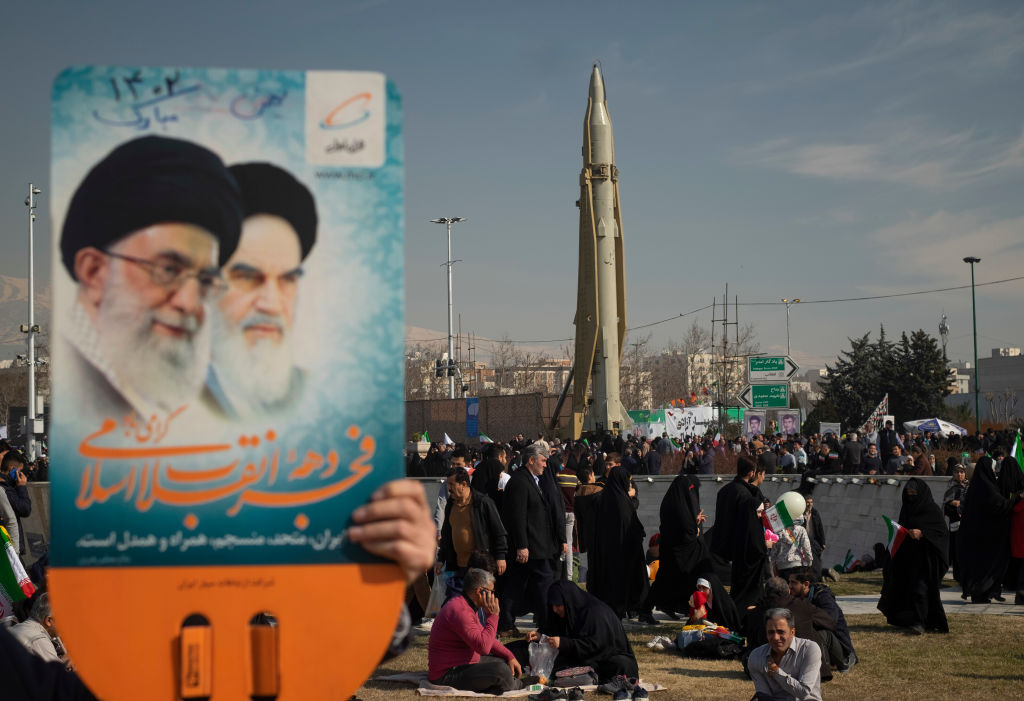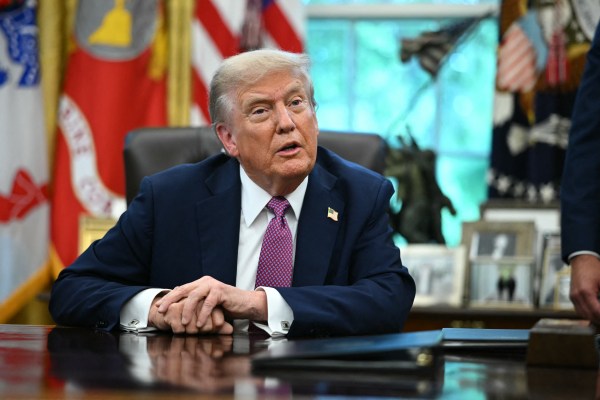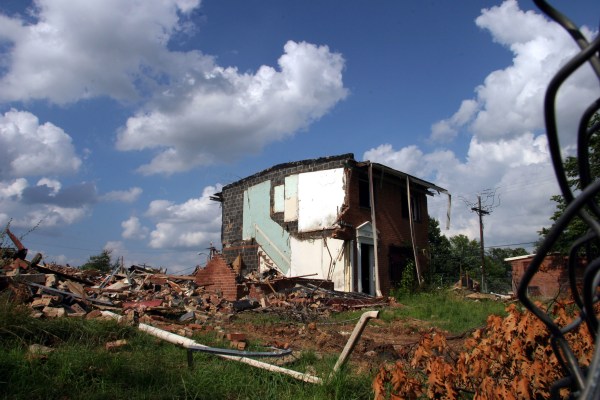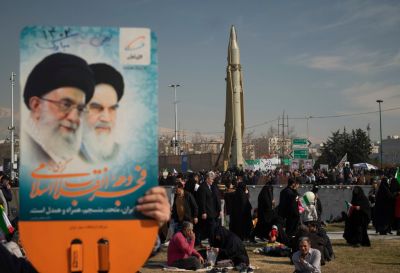In a rare bit of good news from the Middle East, U.S. forces in Syria and Iraq are seeing their first real respite after months of relentless attacks. Iran has tentatively reined in its proxies and reduced its own risk exposure, fearing these groups were courting conflicts that might spiral out of control. This creates an opening for more coherent and forceful U.S. strategy to exploit Iran’s vulnerabilities and compel enduring changes to its destabilizing behavior. It is highly uncertain, however, whether the Biden administration will seize this opportunity.
Two developments came together to produce this inflection point. First, Israel shifted from defense to offense in its operations against the Islamic Revolutionary Guard Corps (IRGC) in Syria. During the decade preceding October 7, hundreds of Israeli airstrikes pounded various Iran-backed militias in that country—chiefly in an effort to interdict key weapons transfers to Hezbollah, though without trying to reverse the buildup of a more permanent Iranian presence in Syria. But Israeli operations have picked up pace and expanded to target senior IRGC and Hezbollah officers. Facing this new threat environment, high-ranking Iranian officers significantly scaled back their presence in the country and redeployed their proxies away from the Syrian Golan abutting Israel.
Second, the Biden administration stepped up its own actions after a January 28 drone strike by an Iraqi IRGC proxy that killed three American soldiers in Jordan. In the three months prior, the United States conducted little more than a dozen airstrikes in response to 160-plus proxy attacks on its forces in Iraq and Syria, often choosing to hit empty warehouses and other low-value targets. In just two days in early February, it carried out 85 strikes against mostly higher-value targets—including eliminating the commander of the Iraqi group responsible for the January 28 attack with a drone strike in the middle of Baghdad. It also employed bigger platforms than before, most notably strategic bombers.
At least initially, Pentagon officials paired these military moves with starker signals of intent. Self-restricted, milquetoast pledges to conduct only “narrowly tailored” and “proportionate” responses were ditched for declarations of an impending “multitiered” campaign aimed explicitly at the IRGC. Operations would now be open-ended and designed “to take away even more capability than in the past.” Pressure on U.S. forces has eased markedly since these changes, as the IRGC moved forces and personnel out of Iraq and Syria and its proxies dialed down their attacks by more than 90 percent.
Tehran’s abrupt about-face is telling. By late January Iran had good reason to fear that reckless actions by Hezbollah and other proxies could trigger serious blowback on its own personnel, assets, and possibly territory. Top Iranian officials quickly darkened doors in Baghdad and Beirut to insist that these groups reverse rising tensions with the United States and Israel. Feeling the heat from Beijing about Houthi attacks on vital chokepoints for seaborne trade, Iran also attempted, evidently with far less success, to limit what weapons its Yemeni proxies could use against international shipping.
This tenuous lull highlights Iran’s own underlying strategic weaknesses. Its well-armed proxy “axis of resistance,” centered on Hezbollah’s massive arsenals in Lebanon, certainly creates major problems for Israel, Arab states, and the U.S. bases it encircles. Tehran’s ability to impose highly asymmetric costs gives it a sharp sense of escalation dominance and undermines the normal logic of deterrent threats against it. But at the same time, these iron claws are meant to compensate for the paper tiger wielding them.
The regime’s enduring concern is to avoid feeling any pain itself. The imposition of such pain, and the fear of more to come, drove the remarkably few instances in which Iran genuinely altered its long-term behavior, including its monumental decision to end the interminable war with Iraq in 1988 and—after heavy IRGC casualties in Syria’s civil war—its concerted buildup of proxies to bear the brunt of its expanding regional ambitions.
Iran’s cost-aversion also creates self-limiting contradictions at the heart of its proxy approach. The more it tries to insulate itself by devolving operational command and advanced weapons to its proxies, the more freedom of maneuver they have to escalate hostilities that could ultimately imperil Iranian targets. Tehran has leaned this way in recent years, as the IRGC’s expeditionary arm struggled to replicate Qassem Suleimani’s brutally artful direction of this far-flung proxy network following his death by U.S. drone in 2020. Yet reversing course and clamping down could fray the very ties upon which Iran depends, since Hezbollah, the Houthis, and other groups have their own operational and political considerations that do not always align with Tehran’s goals and sensitivities.
And so Iran is now biding its time and probing for signs of its enemies’ waning resolve—all with an eye to reescalating when the danger is safely past. Following the 1991 Gulf War and 1996 Khobar Towers bombing, Iran provisionally paused support for proxy attacks until it believed a direct U.S. response was off the table. Genuinely worried it was next on the U.S. hit list after the Taliban and Saddam, the regime froze key elements of its nuclear weapons program from 2004-07, until the American military became so obviously enmired in Iraq and Afghanistan that it no longer posed a viable threat.
The Biden administration is squandering a similar opportunity to convert its temporary tactical edge into a more durable strategic victory. By remaining conspicuously silent since early February, it seems eager to treat this respite as proof of successful deterrence that obviates the need for continued pressure. But deterrence was already fatally damaged even before the lethal attack by an Iranian-made drone in Jordan. At this point, still framing U.S. actions strictly in terms of self-defense will merely encourage Iran to continue eroding U.S. resolve and capabilities.
Therefore a heavy burden of proof remains on the United States to persuade Iran to halt its aggression for good. To force major changes in Tehran’s behavior, Washington should ditch deterrence for a wholly different strategy of compellence. This means sustaining—and likely intensifying—its initial February response until Iran’s proxy “ring of fire” actually terminates its multifront war. To be credible, a coercive campaign like this, per Cold War strategist Thomas Schelling, “needs to be allocated over time and apportioned in intensity, in a way that retaliatory deterrent threats often do not.” Indeed, because compellence entails much more than just drawing defensible red lines, “it is both harder and more important to know one’s aims and communicate” than it is with deterrence.
Accordingly, as Iran scans for signals of U.S. intent, officials should sharpen their initial threats from earlier this year. Iran must be held responsible, directly and explicitly, for proxy attacks–lethal or not–on American forces, and it must believe the United States will escalate vertically, striking things Iran holds dear. The regime needs to hear from American leadership, proactively and unequivocally, that IRGC personnel facilitating attacks around the Middle East are fair game. If that is not compelling enough, Tehran also needs to know the United States will work its way up the ladder, taking literal aim at higher-level IRGC command and control nodes, Iranian platforms and, if need be, military targets on Iranian terra firma.
Unfortunately, recent Pentagon statements chiding Tehran to “intervene and tell these [proxy] groups to stop” their attacks if it “doesn’t want to see a regional conflict,” are unmoored from any messaging about how such conflict involves prohibitive costs for Iran. Officials cannot afford to lessen the gravity of U.S. threats to act at times and places of their choosing by slow-rolling and telegraphing future operations, as they did in the runup to their February 2 response. In this light, boosting American firepower in the region is helpful only if Iran thinks its presence increases the pain its forces are about to feel.
The United States can also convey stronger resolve by backing Israel, whose forces are trying to compel an end to Hezbollah’s attacks and eject its ground troops from southern Lebanon. Clear statements supporting Israel’s readiness to inflict steadily heavier costs here will feed Iranian fears of escalation—the same fears that already drove it to pull back its own forces around Israel’s north, turn the screws on Hezbollah to de-escalate, and head off a larger war. But it’s not just the Biden administration that needs to act: The aid package that is presently stalled in Congress is vital to restocking Israel’s depleted arsenals and replenishing the prepositioned U.S. weapons stockpile that supports both countries’ readiness for heightened conflict.
Hezbollah’s main function is to deter an Israeli strike on Iran’s nuclear weapons program—the regime’s most-prized asset—so Tehran is especially susceptible to anything that jeopardizes this ace in the hole. Thus U.S. backing for Israel is particularly effective for coercing Tehran to roll back its aggression, including by pressing Hezbollah to fall in line with American diplomatic efforts to restore calm on Israel’s northern front. And the heavier Tehran’s hand, the more Hezbollah doubts the wisdom of inviting a full-scale third Lebanon war on behalf of Iran’s nuclear ambitions—and, in turn, the less confident Iran feels about pursuing those ambitions unabated.
The Houthis are a sui generis case in Iran’s proxy network, with slightly different implications for a new U.S. strategy. They are far more autonomous than the rest of the axis and take less heed of directives from far-off Tehran. By the same token, the Houthis are less central to Iran’s regional objectives than is Hezbollah, even as the regime’s interests are well-served by threats to shipping and the Arabian Peninsula from Yemen. The United States can curtail this threat only by targeting Iranian forces providing the crucial intelligence, weapons, and advisory support that enables Houthi launches in the first place—not by merely staying the course and solely targeting Houthi drones and missiles.America’s goals in the Middle East remain fundamentally unchanged since right after October 7, when President Biden inveighed Iran not to broaden the Israel-Hamas war or attack U.S. forces in the region. His administration’s more robust, but incomplete, response to the Jordan attack shows how an even more forceful and sustained approach can actually secure these objectives. Though the prospect of stronger U.S. action and escalation can seem daunting and uncertain, surely it offers a far safer course than simply awaiting Iran’s next deadly attack.






Please note that we at The Dispatch hold ourselves, our work, and our commenters to a higher standard than other places on the internet. We welcome comments that foster genuine debate or discussion—including comments critical of us or our work—but responses that include ad hominem attacks on fellow Dispatch members or are intended to stoke fear and anger may be moderated.
With your membership, you only have the ability to comment on The Morning Dispatch articles. Consider upgrading to join the conversation everywhere.